Embarking on the intricate embroidery journey often involves navigating a tapestry of specialized terms. A puzzling phrase that frequently leaves newcomers perplexed is “14 count.”
What do 14 counts mean in embroidery, and why is it significant? Understanding the nuances of stitch counts is fundamental to creating exquisite needlework.
In this exploration, we’ll unravel the mystery behind “14 counts” in embroidery, breaking down its implications for your projects.
Whether you’re a seasoned embroiderer seeking a refresher or a novice eager to grasp the essentials, join us on this enlightening journey as we delve into the world of stitch counts and unveil the secrets concealed within the numbers.
Prepare to transform your embroidery endeavors with a clearer understanding of the intriguing concept of “14 counts.” Join us to learn how this stitch count impacts your needlework, from choosing fabrics to achieving precision.
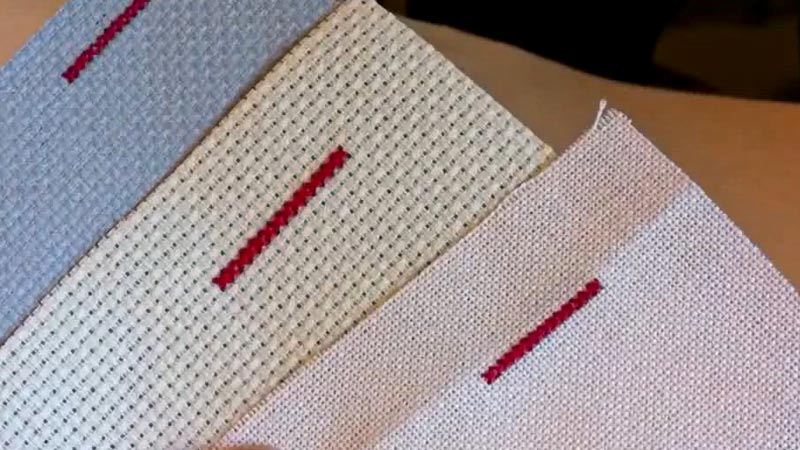
What Does 14 Count Mean In Embroidery?
In each embroidery project, understanding what 14 count AIDA means is essential. Here’s everything you need to know about it.
Understanding 14 Count in Embroidery
When we refer to “14 counts” in embroidery, we are talking about the number of stitches per inch in the fabric. This count significantly impacts the density of stitches, affecting the overall appearance of your embroidered piece. Therefore, ’14 count’ means 14 count AIDA stitches per inch.
Fabric Size Considerations
The fabric count determines the size of each stitch, influencing the level of detail achievable in your designs. Higher counts, like 14 counts, result in smaller stitches, allowing for finer details.
Conversely, lower counts yield larger stitches, which are suitable for projects desiring a more pronounced finish.
Choosing the Right Fabric Count
Learning how many threads are needed for 14-count AIDA and selecting the appropriate fabric count is crucial. They depend on the intricacy of your design and personal preferences. A higher count, such as 14 counts, is preferable for intricate patterns or smaller motifs.
A lower count might be more suitable if a project demands a bolder or rustic appearance.
Harmony with Embroidery Thread
The relationship between fabric count and thread thickness is essential. Thicker threads are better suited for lower counts, providing better coverage, while finer threads complement higher counts where space between stitches is limited.
Achieving harmony between fabric and thread ensures a balanced and visually appealing result.
Impact on Project Time and Effort
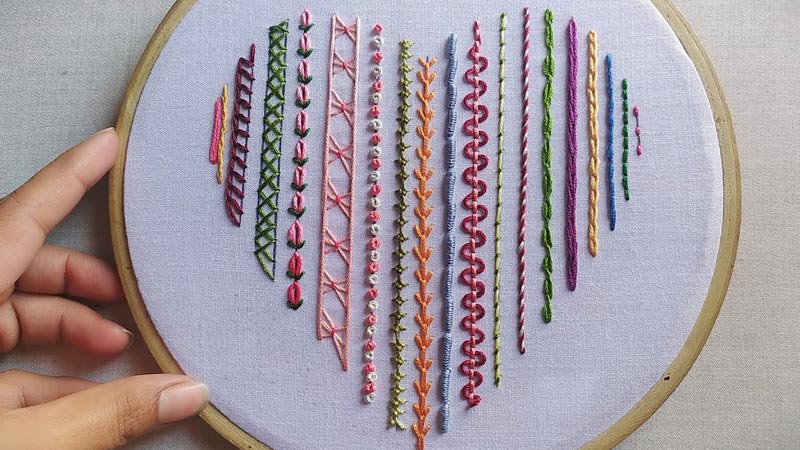
The fabric count influences the time and effort required to complete a project. Higher counts demand more stitches for the same design size, making them more time-consuming.
Beginners might find lower counts easier to work with initially, allowing them to grasp the basics of embroidery before venturing into higher-count fabrics.
Illustrative Example
Consider a 2×2 inch square on 14-count fabric, requiring 28 horizontal and vertical stitches, totaling 784 stitches.
The same design on 28-count fabric (double the count) would fit into the same 2×2-inch area but require 56 stitches both horizontally and vertically, totaling 3,136 stitches. This example underscores the impact of fabric count on a project’s intricacy and time investment.
Texture and Material Considerations
The choice between Aida and Evenweave, both available in 14 counts, adds another layer of consideration.
Aida, known for its clear squares, is favored by beginners and for designs benefiting from a structured appearance. Evenweave, with its smoother texture, is chosen for projects with a softer finish.
Experimentation and Possibilities
“14 count” is a crucial measurement in embroidery, influencing size, detail, and overall aesthetics.
As you embark on your embroidery projects, experimenting with different fabric counts allows you to discover the unique nuances each brings to your designs, opening up a world of creative possibilities.
How Many Threads to Use on 14 Count AIDA?
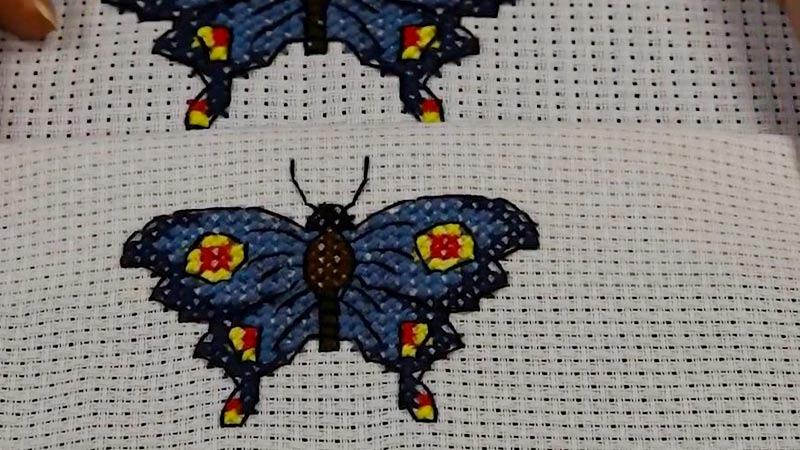
Determining the appropriate number of threads to use on 14-count Aida fabric is crucial to achieving your embroidery project’s desired look and feel.
The choice of thread counts not only impacts the overall appearance of your stitches but also influences the coverage and texture of your design.
Let’s delve into the considerations and techniques for selecting the right number of threads for optimal results.
Understanding How Many Threads for 14 Count AIDA
Before delving into the specifics of thread count on 14 counts Aida, it’s essential to comprehend the terminology. Thread count refers to the number of strands or individual threads that make up a single embroidery floss.
Common thread counts include one strand, two strands, and three strands, each contributing to the thickness and coverage of your stitches.
Factors Influencing Thread Count Choice
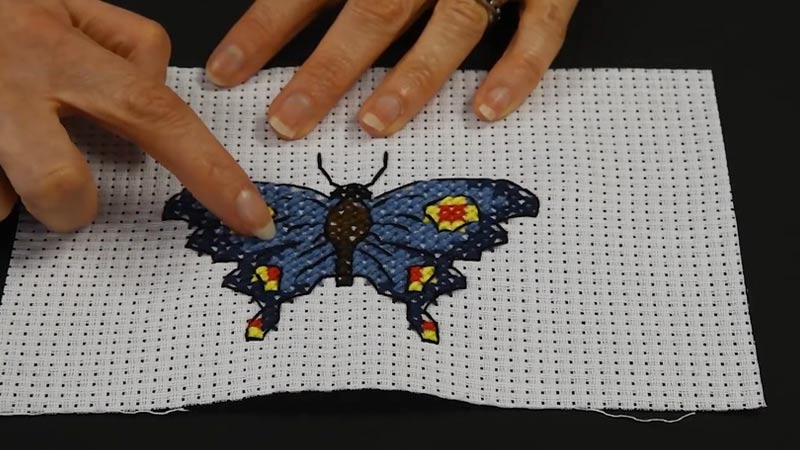
Several factors come into play when deciding how many threads to use on 14-count Aida fabric:
Design Complexity
The intricacy of your design is a key consideration. Finer details may benefit from fewer threads, while bolder designs may require more substantial coverage for a vivid and striking appearance.
Fabric Color and Type
The color and type of your Aida fabric can influence thread count choices. Darker fabrics may require more threads for better visibility, while lighter fabrics may allow for fewer threads.
Personal Preferences
Your personal preferences and the overall aesthetic you wish to achieve play a significant role. Experimenting with different thread counts on small samples can help you determine what appeals to you most.
General Guidelines for 14 Count AIDA
While personal preferences ultimately guide thread count choices, some general guidelines can assist you in making informed decisions:
Single Strand
Using a single strand is ideal for delicate and intricate designs. It provides a finer appearance, allowing for detailed stitches and subtle shading. This is a common choice for smaller text and intricate motifs.
Two Strands
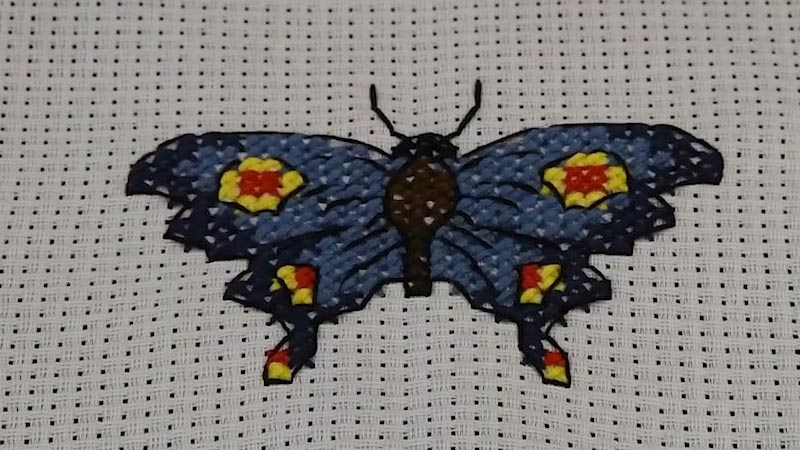
Two strands strike a balance between coverage and detail. It is a versatile option suitable for a wide range of designs. Many embroiderers find this to be a standard choice for projects on 14-count Aida.
Three Strands
Opting for three strands results in bolder and more substantial stitches. This is particularly beneficial for larger areas of solid color or when you want your design to have a more pronounced, textured appearance.
Experimentation and Sample Stitching
Ultimately, the best way to determine the ideal thread count for your project is through experimentation. Create small sample stitches using different thread counts to see how they interact with your chosen fabric and design. This hands-on approach allows you to assess each option’s visual impact and feel.
Tips for Achieving Consistency
Regardless of your thread count, maintaining consistency in your stitches is crucial for a polished and professional-looking finish. Here are some tips:
Thread Separation
Separate your embroidery floss strands carefully to avoid tangling and ensure even coverage. Uneven strands can result in irregular stitches.
Thread Tension
Maintain consistent tension while stitching. This prevents stitches from appearing loose or tight, contributing to a uniform and cohesive look. Otherwise, the threads might come loose and ruin the whole work.
Testing on Scrap Fabric
Before starting your main project, practice stitching on a scrap piece of the same fabric. This allows you to fine-tune your technique and ensures that the chosen thread count works well with the specific Aida fabric you’ve selected.
Why Is Knowing AIDA Count Meaning Necessary?
Understanding the meaning of AIDA count is essential for any embroiderer as it directly influences the outcome of their projects.
AIDA count, which indicates the number of stitches per inch in the fabric, is a fundamental guide in selecting the right material for embroidery. Knowing the AIDA count is necessary for several reasons.
Size of Stitch
Firstly, it determines each stitch’s size, impacting the embroidery’s overall appearance and detail level. Whether you aim for intricate designs or bold statements, the AIDA count sets the stage for achieving the desired aesthetic.
Choice of Thread
Secondly, the AIDA count affects the choice of embroidery thread. Different counts require varying thread thickness to ensure proper coverage and visual balance.
A mismatch between fabric count and thread can result in either too sparse or too crowded stitches.
FAQs
What does “14 counts” mean in embroidery?
“14 count” in embroidery refers to the number of stitches per inch in the fabric. It is a measurement that influences your needlework’s size, detail, and overall aesthetic.
How does AIDA count impact the choice of embroidery thread?
The AIDA count determines the thickness of the embroidery thread needed. Higher counts, like 14 counts, often require finer threads for optimal coverage, while lower counts may benefit from thicker threads.
Why is the AIDA count crucial in fabric selection?
AIDA count is crucial because it sets the stage for the size of stitches and, consequently, the level of detail in your embroidery. It helps you choose a fabric that complements the intricacy or boldness of your design.
What is the relationship between AIDA count and project time?
AIDA count influences the time and effort required for a project. Higher counts demand more stitches for the same design size, making them more time-consuming. Beginners might find lower counts easier to work with initially.
Can I use different thread counts on the same project?
While it’s possible, it’s generally recommended to maintain consistency in thread count throughout a project for a cohesive look. Experimenting with small samples can help you determine the best thread count for your specific design and fabric.
Conclusion
Demystifying the meaning of “14 counts” in embroidery unveils a crucial aspect of this timeless craft. As we’ve discovered, the stitch count holds the key to achieving precision and detail in your creations.
Armed with the knowledge of what “14 count” signifies, you can now navigate patterns, select fabrics, and execute your stitches with newfound confidence.
As you continue your embroidery journey, remember that each count contributes to the overall aesthetic of your piece, influencing its intricacy and visual impact.
Whether you’re crafting delicate designs or bold masterpieces, understanding the significance of stitch counts empowers you to elevate your embroidery skills.
Embrace the artistry, experiment with various counts, and let your needlework flourish. May your future stitches be both skillful and expressive, creating textile wonders that captivate and endure. So, dive into the world of stitches and confidently transform your projects today.
Leave a Reply